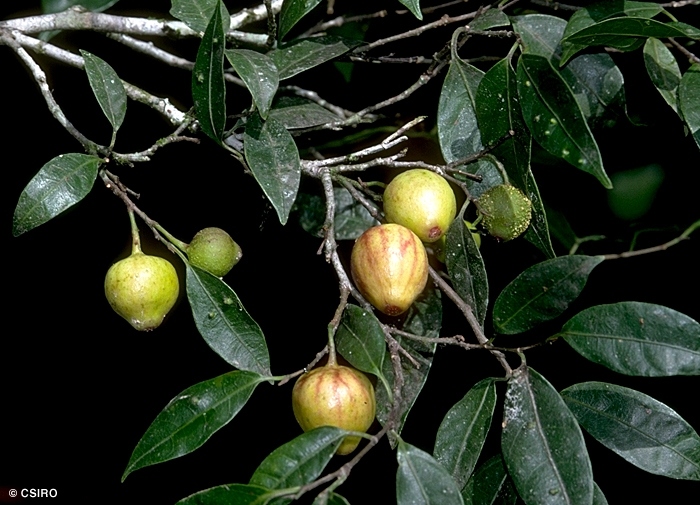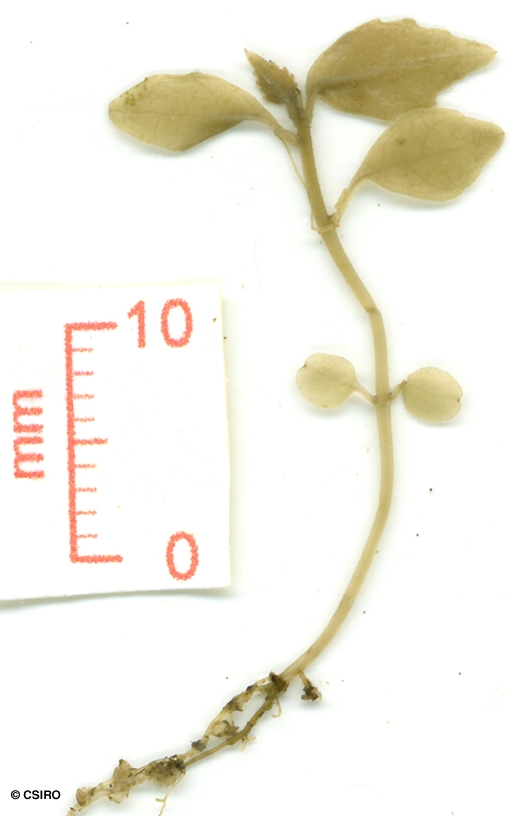Australian Tropical Rainforest Plants - Online edition
Ficus leptoclada Benth.








Bentham, G. (1873) Flora Australiensis 6: 172. Type: Queensland. Rockingham Bay, Dallachy.
Fig, Atherton; Atherton Fig; Figwood
Not a strangling fig. Fibrous stripes in the blaze, darker than the general blaze background. Subrhytidome layer frequently yellow.
Leaf blades about 8-12 x 3-4 cm, upper surface somewhat rough, resembling sandpaper when touched with the lips. Stipules about 0.5 cm long, semi-persistent, remaining attached to the twig after each leaf expands. Twig bark strong and fibrous when stripped. Very small prickle-like teeth sometimes apparent around the margin of the leaf blade.
Figs pedunculate, +/- globular or ovoid, about 20 x 17 mm when ripe. Orifice closed by interlocking apical and internal bracts.
Cotyledons orbicular, about 4 mm diam. At the tenth leaf stage: leaf blade elliptic or ovate, apex acuminate, base cuneate to obtuse, margins crenate or dentate, teeth along upper 2/3 of the leaf blade, both the upper and lower surfaces scabrous; oil dots small, numerous, visible with a lens; petiole and stem scabrous. Stipules sheathing the terminal bud, shed early. Seed germination time 19 to 74 days.
Fruit eaten by Double-eyed Fig-parrots and Fruit Pigeons. Cooper & Cooper (1994).





